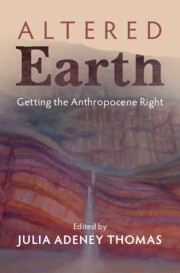Book contents
- Altered Earth
- Altered Earth
- Copyright page
- Dedication
- Contents
- Figures
- Foreword
- Acknowledgments
- Introduction: The Growing Anthropocene Consensus
- Part One Strata and Stories
- Part Two One Anthropocene; Many Stories
- Part Three Future Habitations
- Chapter 11 Anthropocene Ethics, as Seen From a Mars Mission: A Story
- Chapter 12 Mutualistic Cities of the Near Future
- Afterword
- Biographies of Chapter Contributors
- Index
Chapter 12 - Mutualistic Cities of the Near Future
from Part Three - Future Habitations
Published online by Cambridge University Press: 24 March 2022
- Altered Earth
- Altered Earth
- Copyright page
- Dedication
- Contents
- Figures
- Foreword
- Acknowledgments
- Introduction: The Growing Anthropocene Consensus
- Part One Strata and Stories
- Part Two One Anthropocene; Many Stories
- Part Three Future Habitations
- Chapter 11 Anthropocene Ethics, as Seen From a Mars Mission: A Story
- Chapter 12 Mutualistic Cities of the Near Future
- Afterword
- Biographies of Chapter Contributors
- Index
Summary
Life relies on mutualistic relationships among species, and on the constant rejuvenation of Earth’s materials. Mutualistic cities would do the same thing, enhancing biodiversity, clean air, better soils, fresh water, and stronger communities. Today, however, cities are far from mutualistic. Currently, more than 4 billion people live in cities, and that number is rising quickly. These conglomerations of humanity consume vast Earth resources, and, worst yet, disgorge astonishing amounts of waste into the atmosphere, water, land and sea around them. Unlike "smart cities" that rely on sophisticated technology to monitor and respond to environmental conditions, and unlike "sustainable cities" that stress reduction and reuse, the concept of a "mutualistic city" emphasizes regenerative cycles and virtuous feedback loops. These cities are the key to our future.
Keywords
- Type
- Chapter
- Information
- Altered EarthGetting the Anthropocene Right, pp. 232 - 258Publisher: Cambridge University PressPrint publication year: 2022
- 2
- Cited by

